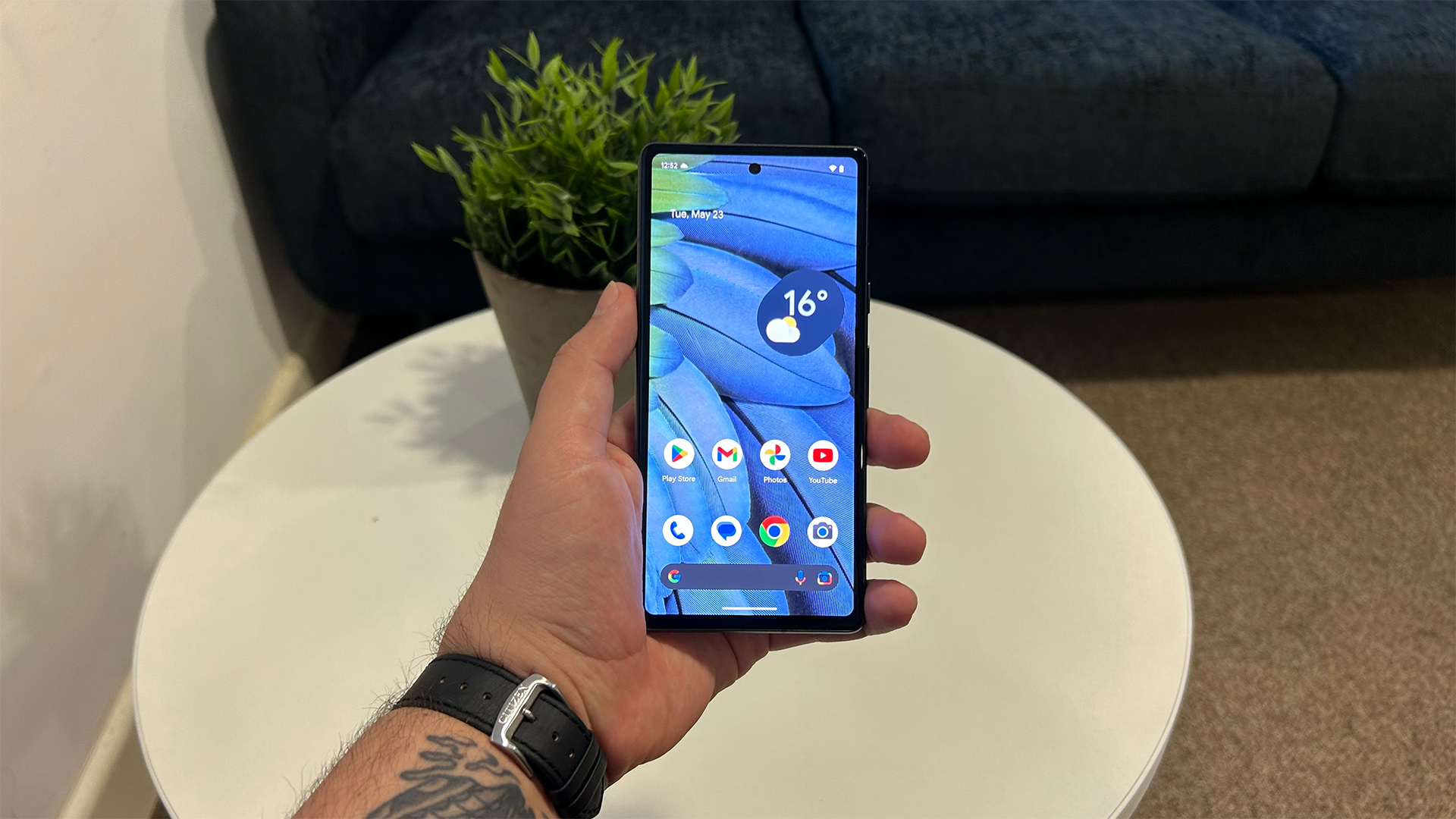What Hi-Fi? Verdict
The Pixel 7a is a big improvement over the more expensive Pixel 7, making it very easy to recommend.
Pros
- +
Excellent contrast
- +
Punchy colours
- +
Dynamic sound
Cons
- -
Poor dark details
- -
Tough competition from Sony
Why you can trust What Hi-Fi?
If you’re not familiar with Google’s “a” series of Pixel phones and are wondering why we’re reviewing another Pixel 7 that looks almost identical to the model that was released in October of last year, then we’ll get you up to speed. Each year, Google releases a duo of Pixel smartphones in the Autumn time, and roughly seven months later it follows up with a cheaper model with a similar design and spec sheet, with a few corners cut in order to bring the price down.
Hence, we have the Pixel 7a – a budget Android phone that looks almost identical to the flagship Pixel 7, both in looks and on paper. So should you spend the extra money and get the flagship model? Or will this wallet-friendly Android smartphone suffice, especially when it comes to picture and sound?
Price
The Pixel 7a retails for £449 / $499 / AU$749 and comes in only one configuration. For the money you get 128GB of storage and 8GB of RAM, and it's powered by the same Google-designed Tensor G2 chip that powers the Pixel 7 and Pixel 7 Pro.
Speaking of the Pixel 7, the 7a is a fair bit cheaper than the 7’s original retail price of £599 / $599 / AU$999. However, as it's been over half a year since the 7’s release, we’ve seen the price fall significantly – in fact, the Pixel 7 can be found for around £470 / $500 currently, meaning that you can snag the flagship phone for almost the same price.
It's also worth mentioning that the Pixel 7a is more expensive than last year’s Pixel 6a (at least in the UK and US), which launched at £399 / $449 / AU$749. However, the Pixel 7a gets an additional 2GB of RAM as well as plenty of upgraded features which we’ll get onto soon.
The Pixel is up against some tough competition, with the Award-winning Sony Xperia 10 IV now retailing for £380, although it is a UK and European-exclusive device while the PIxel 7a is globally available.
Build
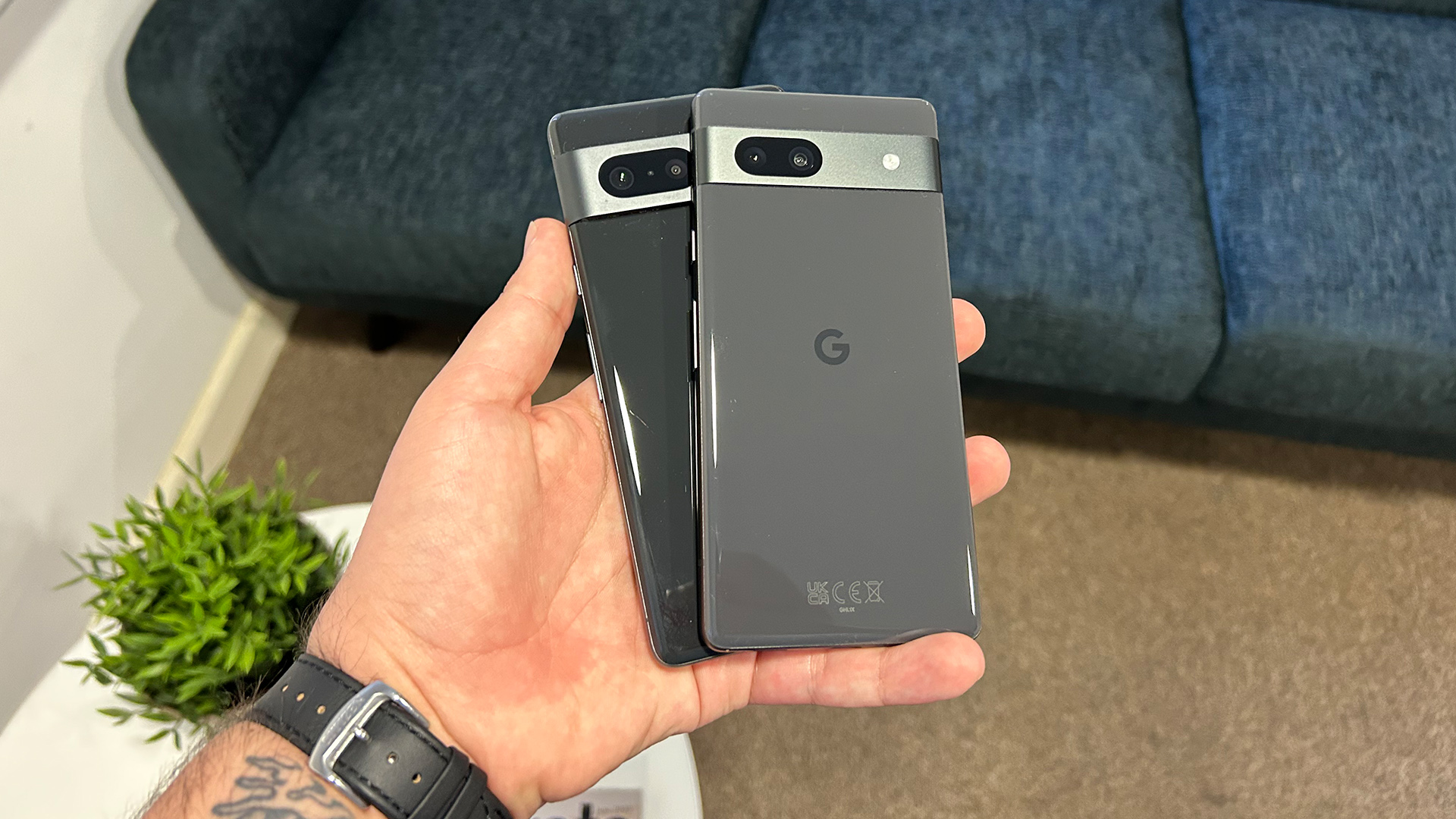
While the Pixel 7a features an almost identical design to the Pixel 7, it is ever so slightly smaller and lighter. The 7a features a 6.1-inch display, down from the 7’s 6.3-inch, and it has marginally thicker bezels. It’s also about four grams lighter at 194g, which is likely due to the fact that it uses a plastic back cover instead of glass. However, the aluminium frame remains, giving this budget Pixel a sturdy and premium feel in the hand, and the glossy back panel does a decent job of imitating glass.
The phone comes in three finishes: Charcoal, Snow, Sea and Coral – the last option being a Google Store exclusive. We have the Pixel 7 and 7a in their Obsidian and Charcoal hues respectively, and they’re strikingly similar, with the only giveaway being the 7a’s less prominent camera bar.
As for the rest of the phone, you’ll find a power/lock button and volume rocker on the right edge of the device and a USB-C port on the bottom for charging – just remember to provide your own USB charger plug as (like practically every smartphone these days) there isn’t one in the box.
Features
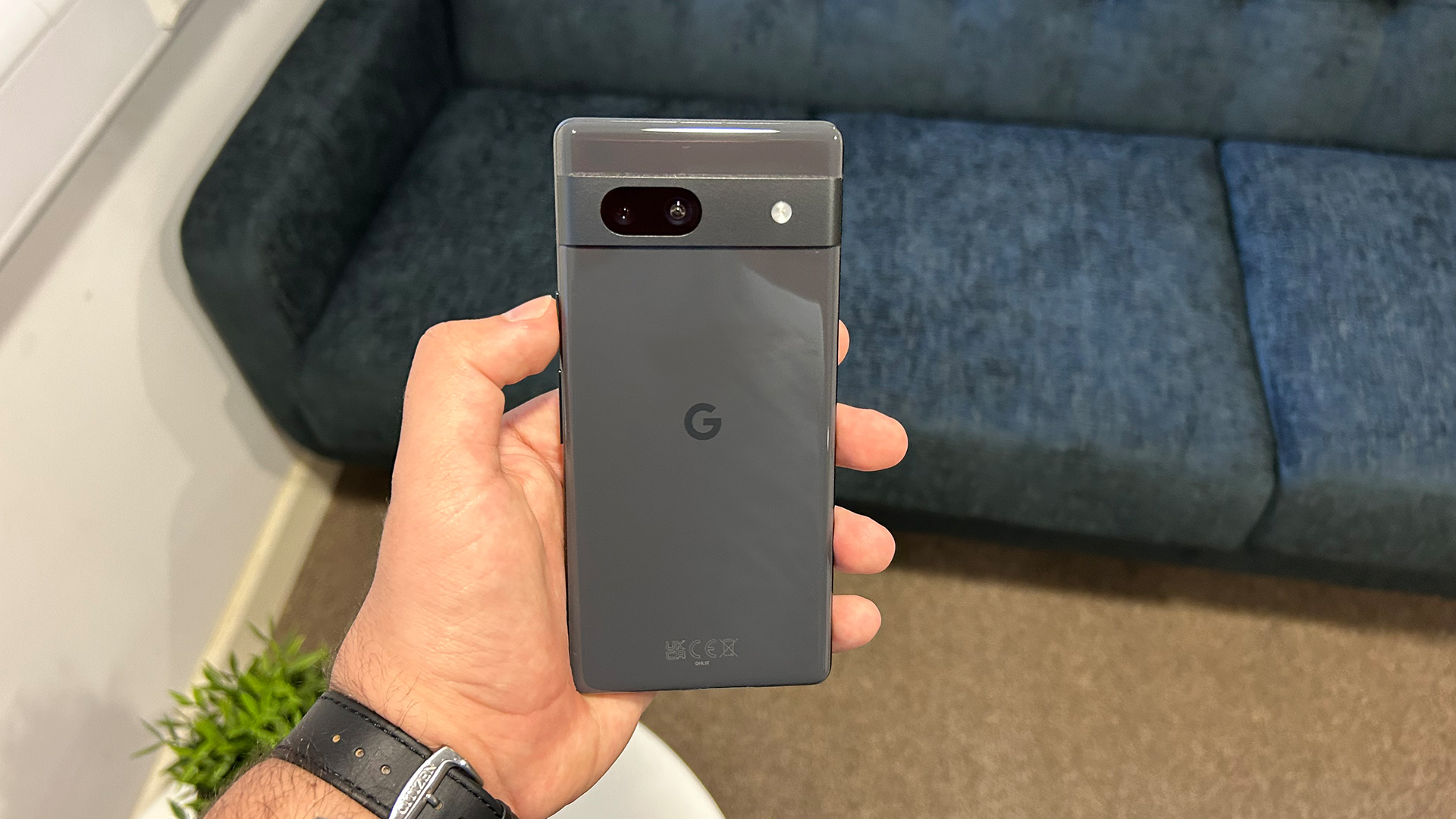
As we mentioned before, the Pixel 7a gets a host of upgrades over its budget predecessor. Foremost it gets an upgrade in the screen department, with a 6.1-inch OLED display, running at 1080p/90Hz. The display has a pixel density of 429ppi and supports HDR; Google doesn’t specify which format but we suspect it to be just HDR10. If we were to pick one hole in the screen (that isn’t the centred hole-punch camera) it would be its brightness. Google hasn’t supplied an exact figure, but even cranked up to maximum brightness, the screen seems slightly dim which can impact visibility in bright environments.
Comparatively, the Pixel 6a had a 1080p/60Hz OLED screen, so the smoother motion for scrolling and gaming is an appreciated upgrade – although you’ll need to switch “Smooth Display” mode on in the settings menu to take advantage of it.
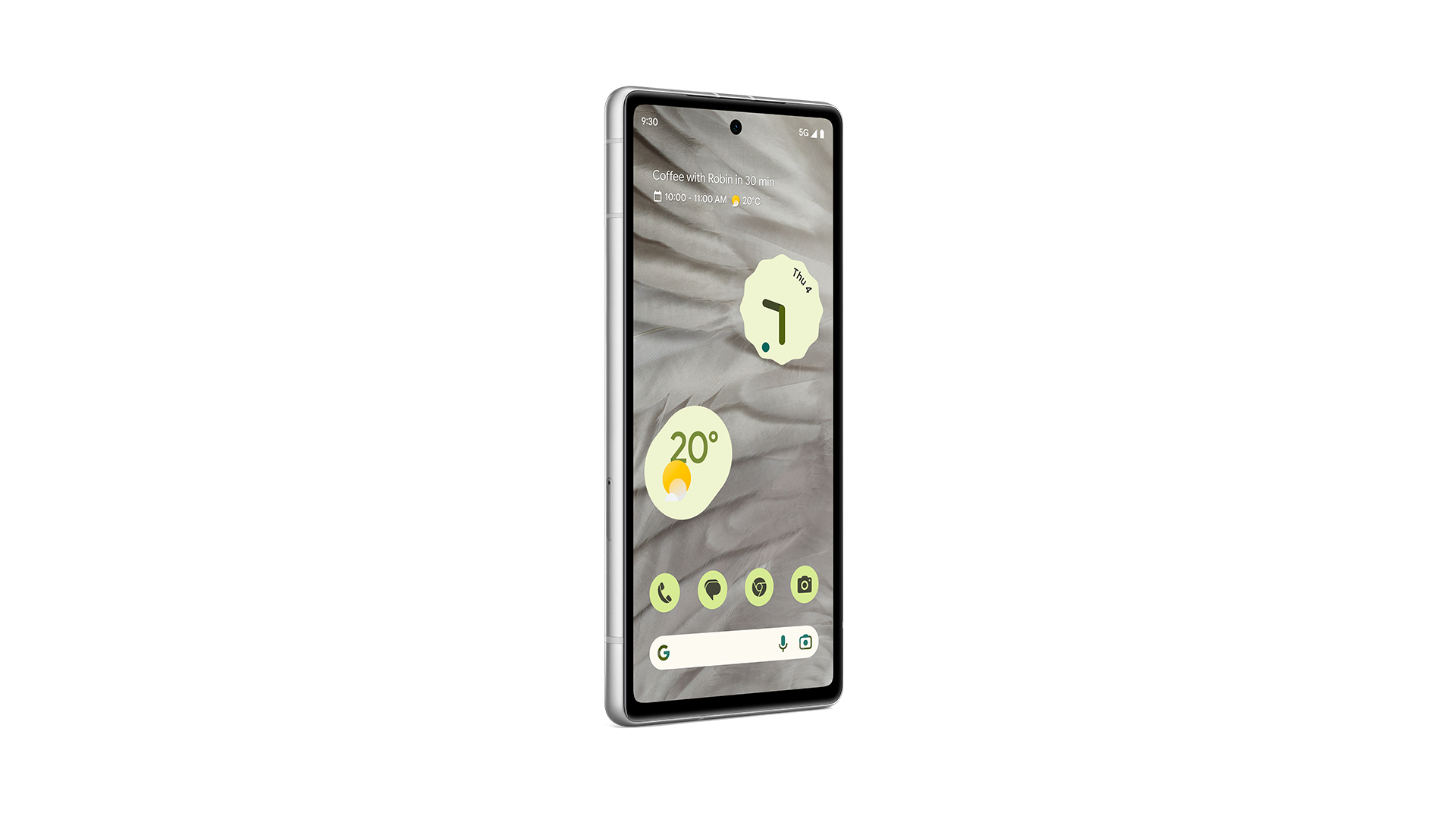
Screen size 6.1-inch
Screen type OLED
Screen resolution 1080 x 2400 (429ppi)
Finishes x4 (Charcoal, Snow, Sea, Coral)
Operating system Android 13
Storage 128GB
RAM 8GB
The 7a also features a stereo speaker set-up with the same bottom-firing and earpiece combo arrangement as the 6a and 7. As expected, there’s no headphone jack here, but there is Bluetooth 5.3 with Bluetooth LE for connecting wireless headphones. The Pixel is slightly nerfed in the audio department as it doesn’t support Dolby Atmos (neither does the Pixel 7) or Google’s Spatial Audio sound format that you can find on the 7 and 7 Pro.
One area in which the Pixel excels is with its camera, as it makes a ludicrous jump from 12MP on the 6a to 64MP on the 7a. It even outclasses the Pixel 7’s 50MP main camera on paper, and it's backed up by a 13MP ultrawide sensor that also appears to be newer than the 12MP one found on the 7 and 6a. In practice, the Pixel 7a keeps up Google's excellent reputation when it comes to smartphone photography, meaning social media snappers and budding photographers will be well taken care of by the 7a.
The Pixel 7a also gets a selection of features that have trickled down from the flagship models, including wireless charging (albeit at 7.5W so not particularly quick) and face unlock. The under-display fingerprint scanner also returns from previous models, and it's pleasantly responsive and accurate. Rounding off the feature set is the 7a’s 4385mAh battery which, although slightly lower capacity than the 6a, still comfortably provides over a day’s worth of use. In fact when fully juiced up the phone claims it can last for three days, which is impressive – although we found that to be optimistic and is likely based on fairly light use.
Picture
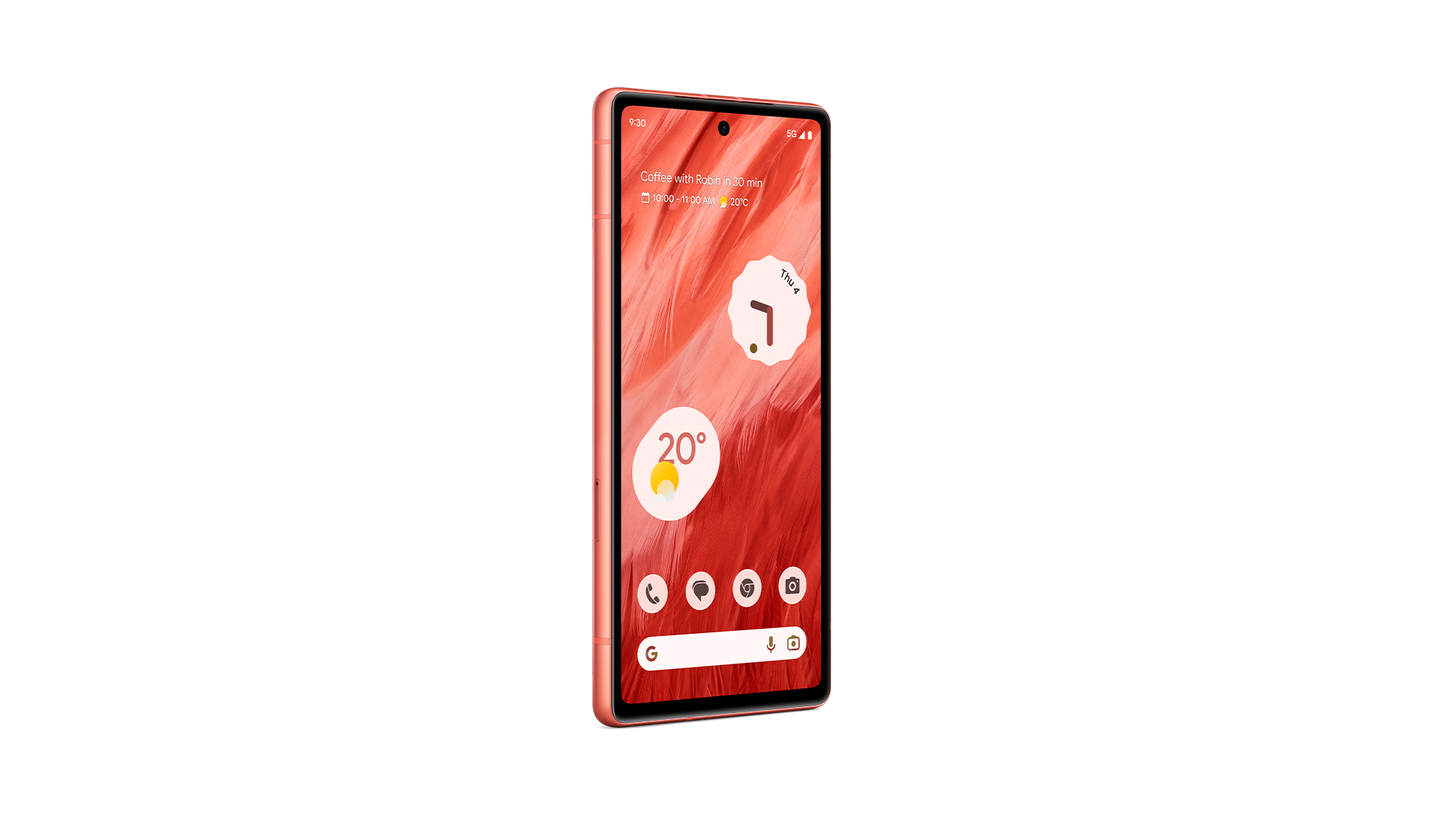
Despite being the cheaper device, the Pixel 7a outperforms the Pixel 7 in practically all aspects of its picture. Firing up Thor: Love And Thunder on Disney Plus, we’re presented with a punchy image that suits the film’s bold colour palette, yet skin tones remain natural and overall colours refrain from looking overcooked. The image is also nicely detailed, with everything from subtle skin textures to broader environmental aspects looking crisp.
What really strikes us with the Pixel 7a is that the picture looks much more three-dimensional when compared to its more expensive counterpart. Edges of subjects are sharp and contrast is handled well, which results in an image with impressive depth and three dimensionality. When the action kicks into high gear, we also see that the 7a is adept with motion, as fast-moving subjects don’t appear to stutter. In some instances we see areas where the regular Pixel 7 struggles with motion, while the 7a takes it in its stride.
Moving onto Drive on Netflix, the Pixel 7a once again impresses with its detailed and perceptibly deep image, which we can safely say by now punches above its weight when it comes to the price-to-performance ratio. Lighting also looks good here, as The Driver’s silver jacket shimmers under the street lights as he prowls down the dark Los Angeles streets. However, this does bring us to the Pixel’s main picture caveat.
Despite using an OLED display, the 7a seems fairly weak when it comes to darker scenes. Shadows are a greyish blocky affair, and not nearly as convincing as the regular Pixel 7, which seems a lot deeper in comparison and holds more detail in the darkest parts of the image. This blockiness obstructs details and makes the darker sections of the picture look distracting, something we didn’t come across with the Pixel 7a’s Sony rival.
Speaking of which, undoubtedly the biggest thorn in the Pixel 7a’s side is the existence of the Sony Xperia 10 IV, which is more cinematic than the 7a in many ways. Its 21:9 OLED display was made for watching films, and it especially outclasses the Pixel when it comes to deeper blacks and enhanced dark details. The Sony is also cheaper than the Pixel, meaning that if getting the best picture at the lowest price is your top priority, then you should probably pick the Xperia 10 IV.
Sound
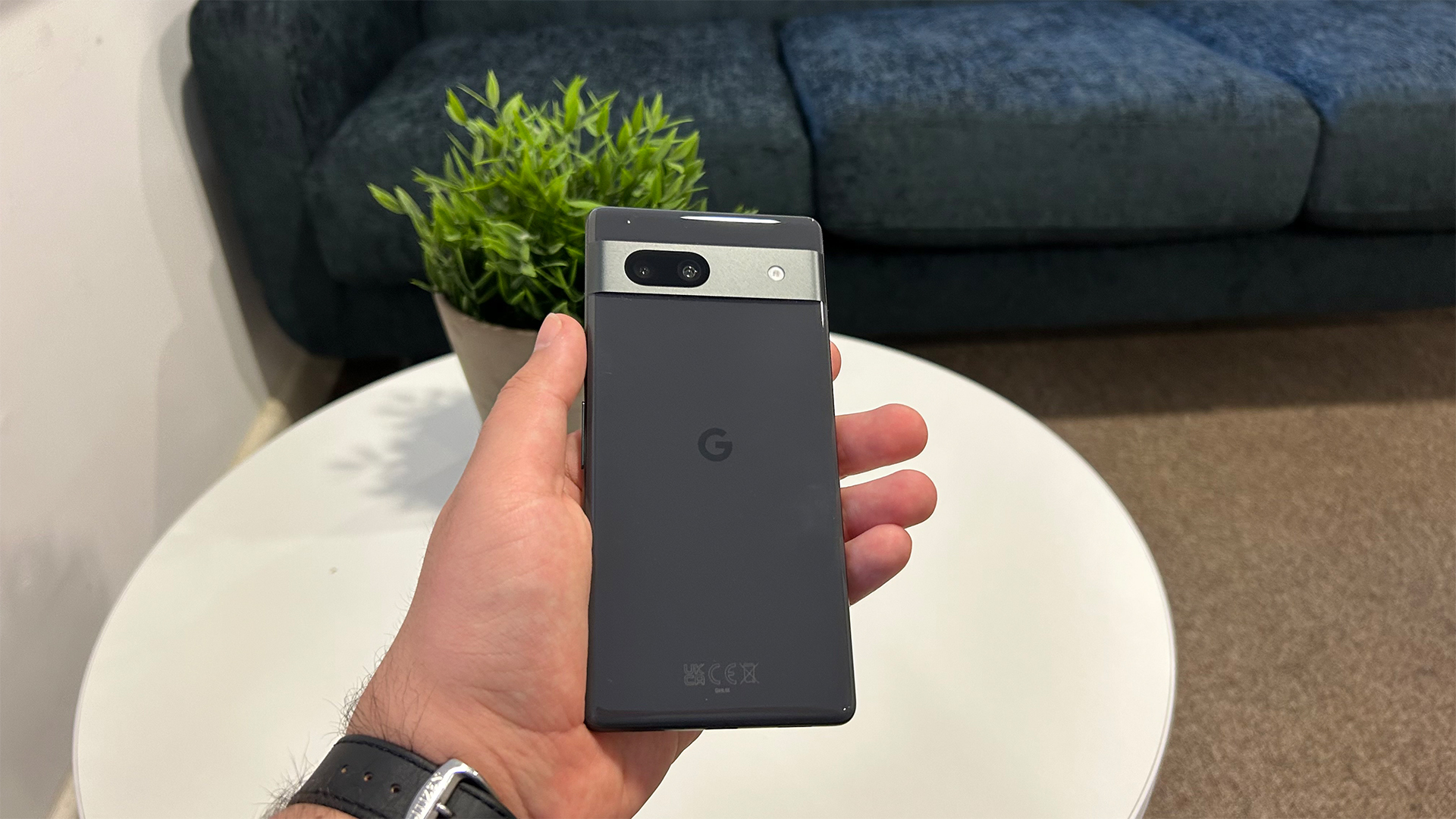
The Pixel 7a’s stereo speakers aren’t exactly ideal for listening to music with, however they certainly are good enough for some light movie watching. Voices are clear and there is a hint of bass when we watch Thor: Love And Thunder’s first big fight sequence, although we find that the speakers appear to be a fair bit quieter than the Pixel 7’s. That isn’t necessarily the end of the world, however, as the Pixel 7 can sound harsh at the highest volumes, and these speakers are leagues ahead of the Sony Xperia 10 IV’s mono loudspeaker.
Plugging in some headphones via a USB-C to headphone jack adapter provides a much better experience, with a more full-bodied and detailed sound. The 7a sounds much more dynamic than the 7, with the piano intro to James Blake and SZA’s Coming Back conveyed with a decent amount of punch. Moving onto Phoebe Bridger’s Kyoto, we find the Pixel handling the track’s quicker tempo and more upbeat nature well, with snappy timing and a hint of vocal sparkle. While it's mostly positive, the Pixel can’t quite shake off the slightly computer-ish nature of the regular 7, as we feel the sound still lacks a little warmth and it could sound more emotive. However, the Pixel 7a is certainly a step in the right direction when it comes to sound.
Verdict
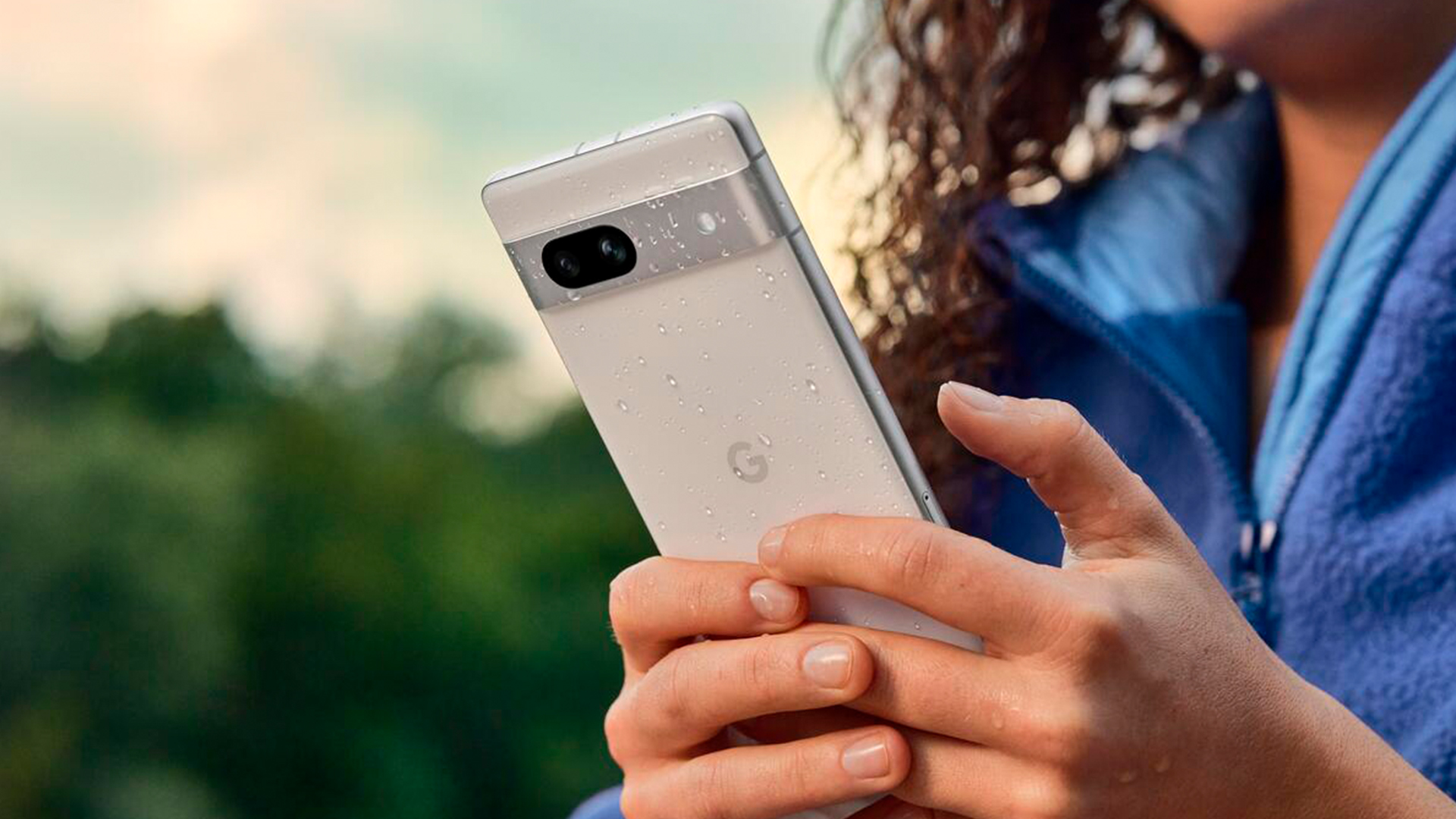
The Pixel 7a is, by almost all accounts, better than the Pixel 7 when it comes to picture and sound. It carries many of the features over from the 7, all while costing slightly less. Admittedly the main draw of saving money compared to the flagship model is slightly less alluring now that the regular 7 has seen some fairly hefty discounts in the US and UK, but it's hard to argue with the Pixel 7’s excellent value.
If it were to exist in a world without the Sony Xperia 10 IV (and soon the Xperia 10 V) then we would recommend it without a second thought, but unfortunately for Google, the Sony is both cheaper and more cinematic. That’s not to say the Pixel 7a isn’t worth your time, as it is a compelling choice for those who want an excellent jack-of-all-trades Android smartphone that’s easy on the wallet.
SCORES
- Picture 4
- Features 5
- Sound 4
MORE:
Read our review of the Sony Xperia 1 IV
Also consider the Nothing Phone (1)
Read our Google Pixel 7 review
What Hi-Fi?, founded in 1976, is the world's leading independent guide to buying and owning hi-fi and home entertainment products. Our comprehensive tests help you buy the very best for your money, with our advice sections giving you step-by-step information on how to get even more from your music and movies. Everything is tested by our dedicated team of in-house reviewers in our custom-built test rooms in London, Reading and Bath. Our coveted five-star rating and Awards are recognised all over the world as the ultimate seal of approval, so you can buy with absolute confidence.
